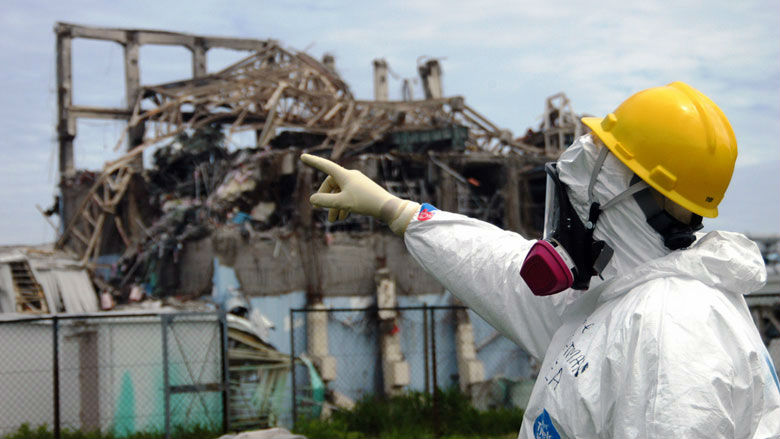Fukushima Radiation Levels Decreasing Rapidly

An international review of the state of the oceans five years after the Fukushima disaster shows that radiation levels are decreasing rapidly except in the harbor area close to the nuclear plant itself where ongoing releases remain a concern.
The Tohoku earthquake and tsunami on March 11, 2011, led to the loss of power and overheating at the Fukushima Daiichi Nuclear Power Plants, causing extensive releases of radioactive gases and liquids. The radioactive fall-out on land is well-documented, but the distribution of radioactivity in the sea and then out to the wider oceans is much more difficult to quantify, due to variability in the ocean currents and greater difficulty in sampling.
Although the accident was one of the largest nuclear accidents and unprecedented for the ocean, the amount of radioactive cesium (137Cs) released was around two percent of that released by the fall out of nuclear weapons and 20 percent that released at Chernobyl. It was similar in magnitude to the intentional discharges of 137Cs from the nuclear fuel reprocessing plant Sellafield in the U.K.
The main release of radioactive material from Fukushima was the initial venting to the atmosphere, but around 80 percent of the fallout fell on the ocean. Several radioisotopes were released, but the focus has been on 137Cs due to its relatively long, 30-year half-life. Cesium is very soluble, so it was rapidly dispersed in the ocean.
Most of the fallout is concentrated in the top few hundred meters of the sea. At its peak in 2011, 137Cs levels were tens of millions of times higher than prior to the accident. Over time, and with distance from Japan, levels have decreased significantly. By 2014, the 137Cs recorded 2,000 kilometers North of Hawaii was equivalent to around six times that remaining from fallout from atmospheric nuclear tests from the 1960's, and about three times higher than prior fallout levels along the west coast of North America.
It is likely that maximum radiation levels will be attained off the North American coast in the 2015-16 period, before declining to around the level associated with background nuclear weapon testing by 2020.
Sea-floor sediments contain less than one percent of the 137Cs released by the incident, although sea-floor contamination is still high close to the source at Fukushima.
In 2011, around half the fish samples in coastal waters off Fukushima had radioactive cesium levels above the Japanese limit, but by 2015 this dropped to less than one percent above the limit. However, high levels are still found in fish around the port. Generally, with the exception of species close to the site, there seem to be little long-term measurable effects on marine life, states the report.
The radiation risk to human life is comparatively modest in comparison to the 15,000 lives that were lost as a result to the Tohoku earthquake and tsunami. So far, there have been no direct radiation deaths. The most exposed evacuees received a total dose that would be expected to increase their lifetime fatal cancer risk from 24 percent to 24.4 percent. However, there were still over 100,000 evacuees from the Fukushima area, and many industries such as fishing and tourism have been badly hit.
Lead author, Dr Ken Buesseler from Woods Hole Oceanographic Institution in the U.S., said: "Overall, the results show a trend of decreasing radiation risk in oceans themselves and to marine life. This is generally true, except for the harbor at Fukushima nuclear power plant. The highest remaining oceanic contamination remains in seafloor sediments off the coast of Japan.
“Despite this, we are still concerned that there is little support to continue assessments as time goes by, in particular from the U.S. federal agencies which have not supported any ocean studies. This is not good, as public concern is ongoing, and we can learn a lot even when levels go down in the environment and are no longer of immediate health concern.”
The report was produced by the Scientific Committee on Oceanic Research Working Group. The report was presented at the Goldschmidt geochemistry conference in Japan. The review paper is published in Annual Review of Marine Science.
